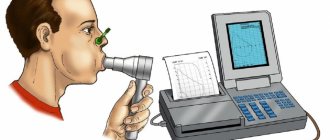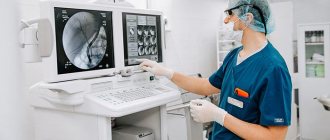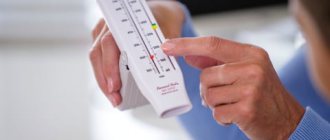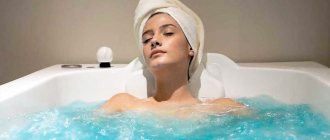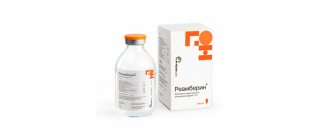To study lung volume, identify bronchial asthma and other respiratory diseases, spirometry is performed. This is a simple and painless procedure in which the patient must take several inhalations and exhalations into a special tube - a spirograph. After confirming the diagnosis, the doctor chooses the most effective treatment method.
Spirometry: what is it?
This concept refers to a procedure that allows you to determine the volume of air that is taken in during inhalation and emitted during exhalation. Measurements are carried out in 2 states - first at rest, and then with effort (forced). Thanks to this study, it is possible to diagnose bronchial asthma and obstructive pulmonary disease in a chronic form. The procedure is also used to study oxygen metabolism and identify other pathologies of the respiratory system.
Samples are taken using a special device - a spirometer. It is a tube connected to a measuring device. There are several types of samples to take:
- in a calm state;
- to determine the maximum lung volume;
- with forced exhalation;
- functional with the use of a special drug that eliminates bronchospasm.
Research methodology
How is spirography performed? After explaining all the nuances of the diagnostic procedure and giving the patient a twenty-minute rest, the doctor begins to perform the technique. The patient is asked to sit up straight. It is important not to tilt your head or bend your torso to prevent distortion of the study results.
Spirography is a diagnostic method that records and evaluates a stream of air released through the mouth. To reliably assess the results, the patient needs to close his nose with a special clip. Once the patient is prepared, the diagnosis can begin.
The person grasps the mouthpiece to direct air into the appropriate tube. Before direct exhalation, the doctor controls the tightness of contact between the mouth and the plastic to prevent loss of part of the gas mixture and distortion of the final result.
The doctor gives instructions to the patient about the nature of breathing.
The most commonly used methods are:
- Normal breathing in a calm mode. Over the course of 6-7 cycles, the computer records the tidal volume (TI) of the patient’s lungs, calculates the number (multiplicity) of chest movements in 1 minute and other parameters;
- Forced exhalation. First, the patient takes as deep a breath as possible. Then, within six seconds, the patient must quickly and under pressure push the air from the lungs into the tube. This sample may be partially modified if necessary. The main thing is to follow the doctor’s instructions;
- Frequent and maximum deep breathing for ten to fifteen seconds. This technique can cause dizziness and even loss of consciousness. The technique is performed with caution in children and elderly people.
Processing of digital data is carried out by a computer with the formation of a corresponding graphic image. After completing the above algorithm of actions and recording the final results of the technique, the doctor makes a written conclusion that helps to establish the final diagnosis and decide on the treatment of a particular patient.
Important! How much does spirography cost? The appropriate diagnosis can be carried out in a public or private clinic. In the first case, if there is a referral from a doctor, the service is provided to the patient free of charge. In private clinics the price ranges from 800 to 1200 rubles. To select a medical institution, you can use reviews with photos of functional diagnostic rooms that are available on the Internet.
What is spirometry: indications
As a rule, a pulmonologist directs the procedure. Spirometry is necessary to assess and clarify various diagnoses:
- respiratory diseases;
- pathologies of the heart and blood vessels;
- assessment of the effect of a disease of a particular organ on respiratory functions;
- clarification of the diagnosis of respiratory infection;
- assessment of the effectiveness of treatment with certain drugs;
- identifying the source of gas exchange disturbance;
- assessment of the level of bronchial obstruction;
- assessment of ability to work while working in difficult, hazardous conditions;
- choice of anesthesia method for the upcoming anesthesia.
If we talk about specific symptoms, spirography is prescribed in cases where the following is observed:
- persistent cough for 3-4 weeks in a row;
- pressing pain in the chest;
- dyspnea;
- feeling of not fully taking a deep breath;
- exacerbations of bronchitis (more frequent);
- to monitor the treatment of bronchial asthma;
- genetic predisposition to diseases of the respiratory system, various types of allergies;
- many years of experience as a smoker;
- long-term work in hazardous conditions.
In some cases, spirometry is performed regularly, for example, 1-2 times a year. Particular attention should be paid to this procedure by asthmatics, athletes and heavy smokers. Along with this, the procedure will be useful for all other patients. If the disease is detected at an early stage, its treatment will proceed in a milder form, and therefore the chances of recovery significantly increase.
Decoding the results of spirography
The doctor deciphers the results of spirometry, makes a diagnosis, gives recommendations for treatment and further examinations.
During decoding of the lung spirogram, the specialist determines the key values necessary for making a diagnosis. The graph below shows a forced expiratory spirogram with key parameters:
- FVC – forced vital capacity;
- FEV1 – forced expiratory volume in 1 second;
- SOS25-75 is the average speed of the forced expiratory flow, corresponding to 25 - 75% FVC.
Forced expiratory spirogram
Some indicators of spirometry norm:
- RR is the frequency of respiratory movements that the patient performed within a minute. Normally - from 16 to 18 units.
- MOD - breathing volume per minute. All the air that passed through the patient's lungs within a minute. Depends on many factors.
- DO - tidal volume. The entire air mass that enters the lung tissue during one normal breath. Normally - from 500 to 800 ml.
- SOS - average volumetric velocity. The rate of forced expiration in the middle of the respiratory movement. With its help, obstructive pathologies are determined.
Below is a table of normal spirometry readings. It should be noted that the assessment of the results of this functional study is carried out by a specialist and must contain accurate data, be concise and informative. In addition to the usual statement of facts that certain indicators are normal and these are not, the result of the study should take into account the principles of clinical decision-making, where the probability of disease after the study is calculated taking into account the probability of disease before the study. The quality of the procedure performed, the probability of false-negative and -positive interpretation, the accuracy of the results and key values are also taken into account.
| Options | Designations | Normal value | Units | |
| Men | Women | |||
| Total lung capacity | TLC | 7,0 | 6,2 | l |
| Vital capacity of the lungs | V.C. | 5,6 | 5,0 | l |
| Forced vital capacity | FVC | 5,6 | 5,0 | l |
| Residual volume | RV | 1,4 | 1,2 | l |
| Functional residual capacity | FRC | 3,2 | 2,8 | l |
| One second capacity | FEV1 | 4,5 | 4,0 | l |
| Maximum expiratory forces of respiratory flow | V*Emax | 10 | l/s | |
| Respiratory limit value (at a frequency of 1/min) | 110 | 100 | l/min | |
| Compliance of breathing apparatus (lungs + chest) | CTl+Th | 1,3 | l/k Pa-1 | |
| Compliance of the chest | CTh | 2,6 | l/k Pa-1 | |
| Compliance of the lungs | CTl | 2,6 | l/k Pa-1 | |
| Airway resistance | R.L. | 0,13 | kPa/l*s | |
The flow-volume loop, the graph of which is shown below, also has an important diagnostic value after spirometry. The vertical axis shows the flow velocity, and the horizontal axis shows the lung volume. Modern spirometers build it automatically.
Normal view of a flow-volume loop
Preparing for spirometry
There is no special preparation for the procedure. 20-30 minutes before the start, the patient should relax and calm down. It is advisable to rest in a calm position, think about pleasant things in order to completely restore your breathing. To obtain reliable results, you must stop taking medications belonging to the group of bronchodilators at least 24 hours before.
Clothing should be comfortable and not restrict breathing and movement. On the eve of the procedure, the doctor specifies physiological indicators (weight, height), the presence/absence of bad habits, bronchial asthma and other diseases in the anamnesis. It is also necessary to reliably answer the question of whether a person takes medications to treat the respiratory system or not.
Evaluating the results of the procedure and comparing them with the norm
A table with normal spirography values helps the doctor decipher the results of the procedure.
Carrying out spirography for bronchial asthma, pneumonia, chronic obstructive pulmonary disease and other pathologies will be accompanied by a decrease in these indicators. Depending on the nature of the problem and its severity, the approach to treating the patient differs.
How is a spirogram made?
A spirogram is the result of a study in the form of a diagram with decoding. To receive it, the patient sits next to the device, to which a breathing tube (mouthpiece) is attached. For hygiene purposes, only a replaceable disposable tube is used.
The patient should clasp it tightly with his lips and press a little with his teeth for security. Then he inhales and exhales air several times. In this case, the nasal passages are fixed with clamps so that breathing occurs exclusively through the mouth.
Maneuvers are performed as directed by the doctor - deep or short breathing. A short break of 1-2 minutes is taken between them. Mild dizziness may occur as a side effect. This is a normal phenomenon that goes away on its own within a few minutes.
Preparatory process
Preparation for spirography does not include any complex actions for the subject, but still some points must be taken into account before the study. If the patient is using bronchodilator (relieving bronchial spasms) drugs, then they should be discontinued:
- prolonged – 24 hours;
- long-acting – 12 hours;
- short-acting – 6 hours before the procedure.
These details should be discussed with your doctor when scheduling a test. Spirometry is performed, just like spirography in the morning, on an empty stomach. Before the procedure, the patient must rest for at least 20 minutes. Be sure to give up smoking for at least an hour and strong coffee for a few hours.
Reasons for ordering an examination
There are a number of indications for prescribing the procedure. Diagnostics is carried out for the purpose of:
- studies of frequent acute respiratory infections, acute respiratory viral infections;
- identifying pathological disorders of the respiratory system with a prolonged cough, respiratory failure, sputum production, chest pain;
- identifying the causes of deviations in the gas exchange process;
- analysis of the relationship between pulmonary diseases and external respiration function, the effectiveness of therapeutic measures in their treatment;
- prevention and early detection of abnormalities in people with an increased risk of developing pathologies: smokers and people whose work activity is associated with harmful substances;
- monitoring the course of bronchopulmonary diseases: pneumonia;
- flu;
- bronchitis;
- asthma;
- chronic obstructive pulmonary disease;
- pulmonary tuberculosis, etc.;
For persons over 40 years of age, who have smoked for 10 years or more, and who have a chronic cough or shortness of breath, examination is mandatory.
Preventive medical measures are recommended for workers associated with the regular use of harmful chemicals.
